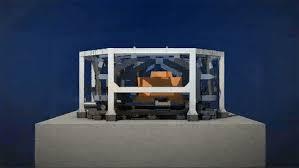Vibration Control System Market Surging Due to Advancements in Smart Materials and Dynamic Control Technologies

The vibration control system market is experiencing an exciting surge, fueled by breakthroughs in smart materials and cutting-edge dynamic control technologies. From era-defining shifts in smart manufacturing to developments in smart infrastructure and mobility, industries are embracing adaptive, intelligent solutions to reduce vibration and improve performance. In this article, we’ll explore the innovations powering this market explosion, uncover key application areas, and highlight what’s on the horizon.
1. What Are Smart Materials?
Smart materials form the core of this revolution. These are engineered substances that can alter their physical properties—like stiffness, damping coefficient, or shape—in response to external stimuli such as electric fields, magnetic fields, or temperature. Examples include:
-
Shape Memory Alloys (SMAs): Metals that return to a pre-set shape when heated.
-
Magnetorheological (MR) and Electrorheological (ER) Fluids: Fluids whose viscosity changes instantaneously under magnetic or electric fields.
-
Piezoelectric Ceramics: Materials that generate an electric charge under mechanical stress and vice versa.
Incorporating these substances into vibration control systems allows for real-time adaptability, turning what was once a static safeguard into a responsive, intelligent system.
2. Enhancing Precision with Dynamic Control Technologies
Dynamic control mechanisms amplify the power of smart materials. These systems rely on sensors, rapid-response actuators, and embedded algorithms to monitor vibrations and adjust damping or isolation properties on-the-fly. This creates a feedback loop where the material responds in real-time to changing operational conditions—be it shifts in frequency, load, or external disturbances.
This synergy delivers exceptional accuracy as the system tailors response to actual vibration events, rather than relying on generic settings. The result? Improved equipment reliability, reduced noise, and enhanced user experience across multiple domains.
3. Key Industries Adopting Advanced Solutions
Manufacturing & Automation
Factories leveraging smart assembly lines, robotic tools, or precision instruments greatly benefit from adaptive vibration control. Dynamic systems mitigate machining errors, enhance surface finishes, and reduce downtime due to component wear.
Automotive & Autonomous Mobility
In EVs, electric motors introduce unique vibration frequencies. Pairing smart materials with dynamic control ensures real-time noise reduction and stability. Autonomous vehicles also require adaptive systems to maintain comfort and sensor fidelity during variable terrains.
Aerospace & Defense
Aircraft experience intense vibration through turbulence and engine operations. Smarter control systems using MR dampers or SMAs help protect cargo, instrumentation, and passengers—ensuring modern aircraft remain safe, quiet, and durable.
Smart Infrastructure & Civil Engineering
From skyscrapers to bridges, integrating smart dampers enables structures to respond to environmental vibrations—including wind or seismic activity. These dynamic systems improve safety and adapt infrastructure to unpredictable conditions.
Renewable Energy
Wind turbine blade oscillations and gearbox vibrations can compromise efficiency and lifespan. Real-time control using smart materials extends maintenance cycles and enhances energy output reliability.
4. The Competitive Edge—Why Industries Are Investing
-
Real-Time Adaptability
Smart materials and dynamic control offer immediate responses to disturbances, improving functionality over fixed solutions. -
Enhanced Component Longevity
Frequent self-adjustments significantly reduce fatigue, stress, and wear on mechanical parts—lowering maintenance costs. -
Compact, Integrated Design
Embedded smart systems allow for sleek form factors, merging functionality directly within machinery or infrastructure, promoting modular and future-proof design. -
Noise Control & Comfort
Adaptive damping reduces both perceivable and harmful vibrations, enhancing sensory environments in vehicles, machines, and buildings.
5. Innovation Trends and Research Directions
Significant research and development are pushing the envelope further:
-
Nano-engineered Smart Polymers optimizing responsiveness while keeping systems light.
-
Hybrid Damping Systems combining passive materials with MR or ER fluids for layered damping effects.
-
AI-Augmented Actuation leveraging machine learning to fine-tune material responses and continuously improve system intelligence.
-
Wireless Vibration Control Modules enabling retrofit capabilities in existing infrastructure and machines without complex wiring.
6. Regional Growth and Market Expansion
The demand for dynamic vibration solutions is climbing globally. Regions leading in manufacturing and technological innovation—such as North America, Europe, Japan, South Korea, and China—are spearheading adoption. Meanwhile, industrializing regions like Southeast Asia and India are beginning to invest in smart infrastructure and mobility systems, offering massive growth potential for the vibration control system market.
7. The Road Ahead
Looking forward, adaptive vibration control systems leveraging smart materials and dynamic technologies will redefine expectations across industries. We’re moving toward solutions that autonomously:
-
Respond to disturbances
-
Analyze environmental feedback
-
Continuously self-calibrate
-
Offer modular deployment across new application areas, from wearables to smart cities
This wave of intelligent vibration control is paving the way for quieter, more resilient, and more efficient systems across the global industrial landscape.
Final Thoughts
The blend of smart materials and dynamic control technologies is injecting fresh momentum into the vibration control system market. As industries chase precision, efficiency, and intelligent operation, these systems meet the moment—simultaneously quieting performance and amplifying reliability. Want to explore specific applications—say, in healthcare, robotics, or infrastructure? Just let me know, and I’ll tailor further insights.
- Art
- Causes
- Crafts
- Dance
- Drinks
- Film
- Fitness
- Food
- Giochi
- Gardening
- Health
- Home
- Literature
- Music
- Networking
- Altre informazioni
- Party
- Religion
- Shopping
- Sports
- Theater
- Wellness


